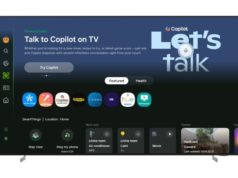Redmond is reporting that Windows 10 has been activated on more than 200 million devices since the operating system was released five months ago. In a blog post, the company’s corporate vice president of Windows and Devices, Yusuf Mehdi, said that as of today, there are more than 200 million monthly active devices around the world running Microsoft’s new OS.
Mehdi also said Windows 10 adoption is speeding up, with more than 40 percent of the total number of active devices running Windows 10 being added since Black Friday, the day after Thanksgiving. Microsoft said today that the figure refers to Windows 10 devices that have become active sometime in the last 28 days.
The company said Windows 10 is on the fastest growth trajectory of any version of Windows ever released, outpacing Windows 7 by almost 140 percent and Windows 8 by almost four times. It also noted that December saw the highest-ever engagement of Windows, with users spending more than 11 billion hours with Windows 10 during the month.
“A major investment in Windows 10 is delivering one platform that enables developers to reach the breadth of Windows 10 devices — across PC, tablet, phone, and more — with a single app and a single Windows Store,” Mehdi said.
Mitigating Circumstances
Some other Windows 10 figures reported by Microsoft today include: More than 2.5 billion questions have been asked of Cortana since its launch; Bing search queries via Windows 10 are up by about 30 percent compared to searches performed on previous versions of Windows; and more than 82 billion photos have been viewed within the Windows 10 Photo app.
While the figures may be impressive, observers are pointing to some caveats in the growth figures. For one thing, Windows 10 is a free upgrade that many users have seen as a low-risk opt-in. Figures for previous operating systems have been based mostly on licenses sold, not copies activated on devices by users. Windows 8 reached 200 million licenses sold four months after its release, while 240 million licenses of Windows 7 were sold within a year of its release.
Microsoft is also combining Windows 10 PCs and mobile devices to come up with its Windows 10 totals. In addition, the 200-million figure includes Xbox One consoles. Prior to November, there were no Windows 10 phones in the market, nor had Microsoft yet pushed the Xbox One update that brought Windows 10 to that gaming system.
Enterprise Action
Of those 200 million devices running Windows 10, more than 22 million of those are on devices run by enterprise and education customers, according to Microsoft. About 76 percent of its enterprise customers are employing “active pilot” versions of Windows 10, the company said.
The company’s stated goal is to get Windows 10 installed on over one billion devices, a plateau it said could be reached by 2019. To jump-start that effort, the company will re-categorize Windows 10 as a recommended update sometime in the coming weeks. That means users with automatic updates enabled might see Windows 10 upgrades automatically initiate on their devices. Users must still choose to download the OS after that, though.







